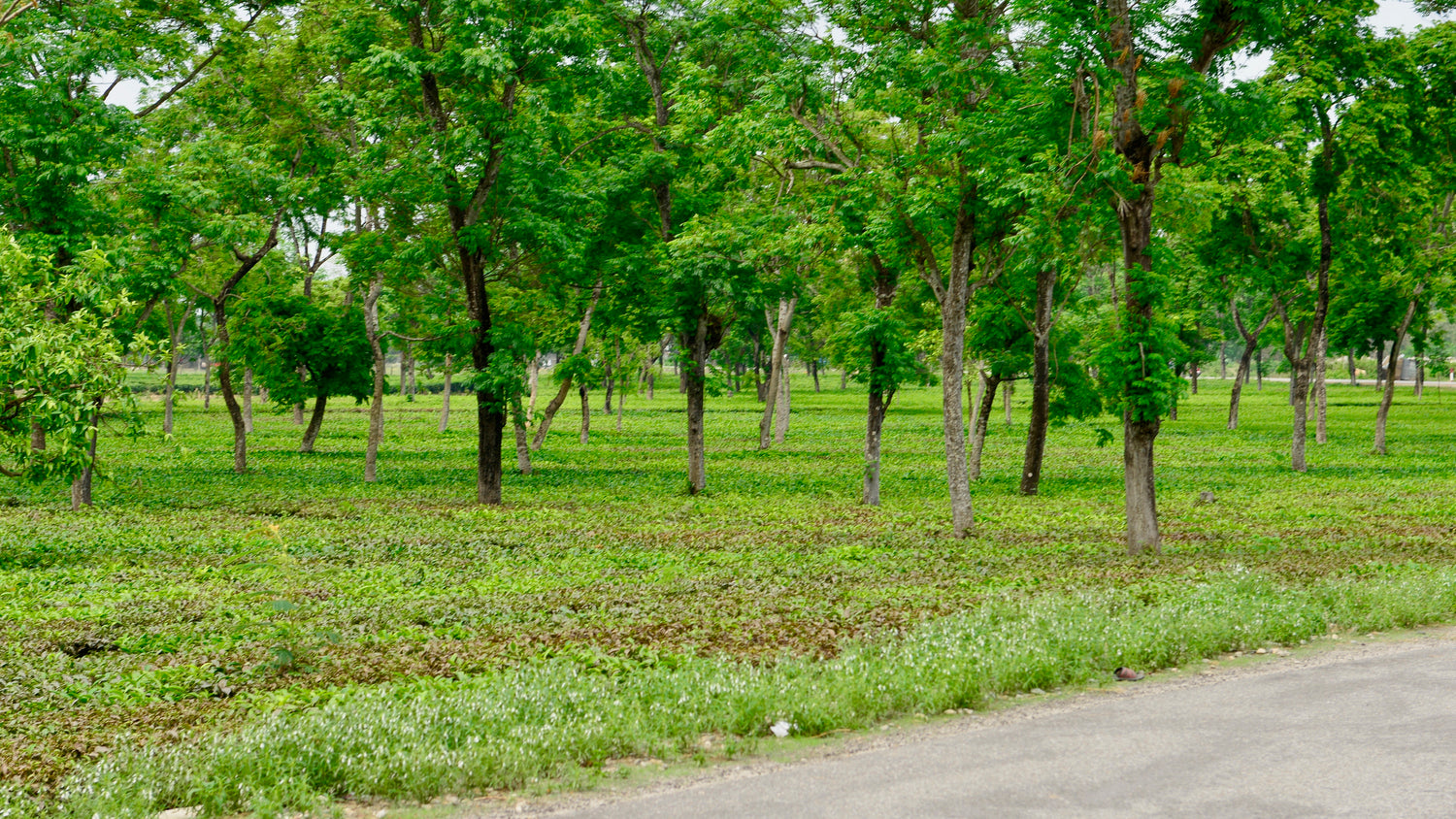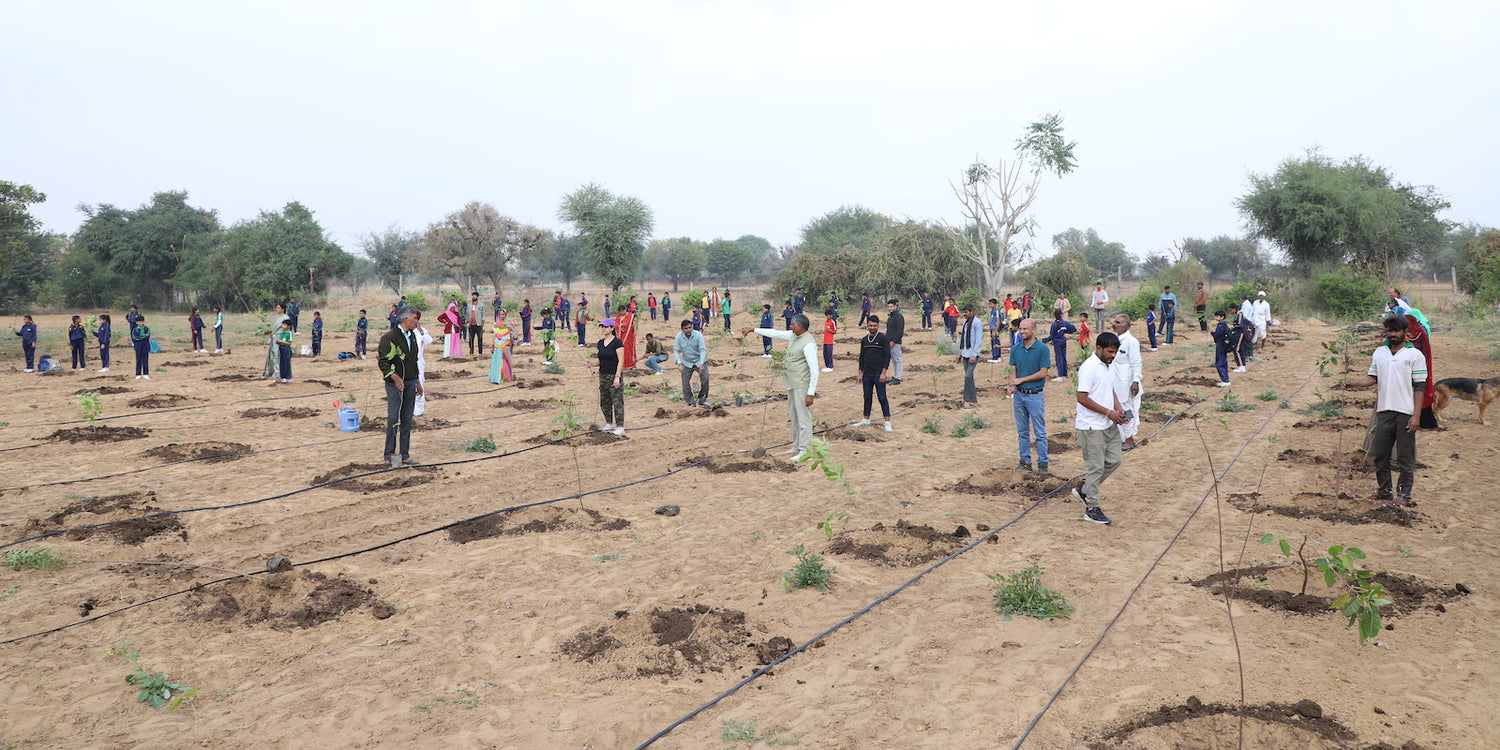Agroforestry near Pune: A Sustainable Approach for the Cultural Capita
Pune, the cultural and educational capital of Maharashtra, is a city that beautifully blends tradition and modernity. However, the rapid urbanization, Read more
Connect with us
-
👥 Corporates
If you are looking for:
- 🌲 Tree Plantation Events
- 📊 CSR Projects
📧 corporate@growbilliontrees.com
📞 +91 9699723523
💬 +91 9325931304 WhatsApp (Only)
🕒 Mon - Sat | 10am - 7pm IST
-
🧩 Tree Plantation NGOs
If you are looking for:
- 💰 Financial Assistance
- 🤝 Operational Support
📧 support@growbilliontrees.com
📞 +91 9699723523
💬 +91 9325931304 WhatsApp (Only)
🕒 Mon - Sat | 10am - 7pm IST
-
🌼 Individuals
If you are looking for:
- 👥 Group Tree Plantation Drive
- 🌳 Bulk Tree Plantation
📞 +91 9699723523
💬 +91 9325931304 WhatsApp (Only)
🕒 Mon - Sat | 10am - 7pm IST
Trending
Trees for Corporates
Agroforestry near Pune: A Sustainable Approach for the Cultural Capital of Maharashtra
Pune, the cultural and educational capital of Maharashtra, is a city that beautifully blends tradition and modernity.
However, the rapid urbanization, deforestation, and erratic climate patterns surrounding Pune have raised serious concerns about environmental degradation, water scarcity, and soil health.
In this context, agroforestry emerges as a beacon of sustainable farming, combining trees, crops, and livestock on the same land to improve biodiversity, farmer incomes, and ecosystem resilience.
This article dives into the growing significance of agroforestry near Pune, its environmental and economic benefits, historical roots, and the pivotal role of Grow Billion Trees in executing and promoting agroforestry in the region.
The Need for Agroforestry Near Pune
The rural and peri-urban regions surrounding Pune, such as Baramati, Mulshi, Junnar, and Talegaon, are predominantly agricultural zones facing increasing challenges:
- Land Degradation: Excessive monoculture farming and deforestation have led to soil erosion and reduced fertility.
- Water Scarcity: Unpredictable rainfall, overextraction of groundwater, and reduced forest cover have strained water resources.
- Climate Variability: Rising temperatures and erratic monsoons impact both crop yields and farmer livelihoods.
- Loss of Biodiversity: Deforestation and urban sprawl have reduced native tree cover and disrupted ecosystems.
- Income Instability for Farmers: Many farmers rely on single-season crops, making them vulnerable to market fluctuations and climate shocks.
Agroforestry provides an integrated solution by improving soil fertility, conserving water, enhancing incomes, and restoring green cover around Pune.
Historical Context of Agroforestry in Maharashtra
Maharashtra, with its diverse geography and climatic zones, has a deep-rooted connection to agroforestry systems. Historically, farmers in the region practiced tree-based agriculture, blending crops with fruit-bearing and timber trees.
- Wada Systems: Traditionally, farmers planted trees like mango, tamarind, and neem around farm boundaries, providing shade, food, and timber.
- Agro-Horticulture: Crops such as pulses, vegetables, and grains were intercropped with trees like guava and jamun.
- Silvo-Pastoral Systems: Livestock grazed under tree plantations, ensuring sustainable fodder availability.
- Sacred Groves: Communities preserved small forest patches for spiritual and ecological purposes, maintaining biodiversity and ecosystem balance.
Modern agroforestry near Pune builds on these traditional practices, combining scientific advancements with cultural wisdom.
Types of Agroforestry Systems Thriving Near Pune
1. Mango-Based Agroforestry Systems
Pune’s favorable climate supports mango varieties like Alphonso and Kesar, intercropped with vegetables, legumes, or medicinal plants. This system offers stable incomes and food security.
2. Bamboo Agroforestry
Bamboo plantations prevent soil erosion and provide quick returns through handicrafts, construction materials, and paper industries. Bamboo is ideal for regions near Pune prone to water scarcity.
3. Timber Agroforestry
Trees like teak, eucalyptus, and acacia are paired with seasonal crops, creating a long-term income stream for farmers while restoring green cover.
4. Silvo-Pastoral Systems
Fodder trees like subabul and gliricidia are grown with grasses to support livestock farming. This system benefits Pune’s dairy farmers while reducing grazing pressure on natural forests.
5. Medicinal Plant Agroforestry
Plants like tulsi, ashwagandha, and giloy are cultivated alongside native trees. These high-demand plants cater to Pune’s growing herbal wellness industry, providing farmers with premium income.
6. Agro-Horticulture with Guava and Pomegranate
Fruit-bearing trees like guava and pomegranate are intercropped with pulses and vegetables. Farmers enjoy dual profits from fruits and food crops, meeting Pune’s urban market demands.
Environmental Benefits of Agroforestry Near Pune
1. Soil Health Restoration
Tree roots bind soil, prevent erosion, and add organic matter. Legume-based agroforestry systems improve nitrogen content, enhancing soil fertility naturally.
2. Water Conservation
Agroforestry reduces water runoff and promotes groundwater recharge. Trees act as natural water reservoirs, ensuring better water management in drought-prone regions near Pune.
3. Carbon Sequestration
Agroforestry systems absorb 20-30 tons of CO₂ per hectare annually, combating climate change and improving air quality around Pune.
4. Enhancing Biodiversity
Native trees and crops create habitats for pollinators, birds, and small wildlife, reviving biodiversity in degraded landscapes.
5. Climate Resilience
Trees in agroforestry systems create microclimates, protecting crops from extreme heat, wind, and erratic rainfall patterns.
Economic Benefits for Farmers
- Diversified Income: Farmers earn from multiple sources, including timber, fruits, fodder, and medicinal plants.
- Reduced Input Costs: Agroforestry improves soil fertility naturally, reducing the need for chemical fertilizers.
- Improved Productivity: Combining trees with crops enhances soil health and water availability, boosting yields.
- Market Opportunities: Pune’s urban markets provide a steady demand for timber, fruits, and herbal products.
- Long-Term Stability: Timber trees like teak and bamboo provide significant returns over time, ensuring financial security for farmers.
Fun Facts About Agroforestry Near Pune
- Pune is a major hub for horticulture products, with pomegranate and mango leading fruit production through agroforestry systems.
- Bamboo agroforestry can generate up to 15 tons per hectare annually, offering quick and sustainable incomes for farmers.
- Teak plantations grown alongside pulses provide dual benefits: long-term timber profits and short-term food security.
Challenges to Agroforestry Adoption Near Pune
- Lack of Awareness: Many farmers are unaware of modern agroforestry techniques and their economic potential.
- Water Scarcity: Regions prone to drought require efficient irrigation solutions for agroforestry.
- Small Landholdings: Fragmented land makes it challenging for farmers to implement large-scale agroforestry systems.
- Market Barriers: Limited infrastructure and market linkages restrict farmer profits for agroforestry products.
Grow Billion Trees: Promoting Agroforestry Near Pune
Grow Billion Trees is leading the transformation of degraded lands into productive agroforestry systems near Pune. Through a combination of innovation, education, and community engagement, they empower farmers to adopt sustainable practices for environmental and economic benefits.
Key Initiatives by Grow Billion Trees
-
Sapling Distribution
Grow Billion Trees provides high-quality saplings of timber, fruit, and medicinal trees to farmers, encouraging sustainable agroforestry. -
Farmer Training Programs
Workshops educate farmers on agroforestry techniques, water conservation, and soil restoration to maximize productivity. -
Land Restoration Projects
Degraded lands near Pune are restored using tree-based systems, improving soil fertility and preventing erosion. -
Market Support
Grow Billion Trees connects farmers to markets for timber, fruits, and herbal products, ensuring profitable returns. -
Community Involvement
Local communities are engaged in tree planting and maintenance, creating a sense of ownership and long-term sustainability.
Achievements by Grow Billion Trees Near Pune
- Planted Over 1 Million Trees: Agroforestry systems have restored degraded farmland and enhanced productivity.
- Empowered 8,000+ Farmers: Farmers have adopted modern agroforestry practices for sustainable incomes.
- Restored 12,000 Hectares: Land previously affected by soil erosion has been transformed into productive ecosystems.
- Increased Rural Incomes: Farmers report a 40% increase in earnings through diversified agroforestry outputs.
Future Prospects of Agroforestry Near Pune
By 2030, agroforestry near Pune can:
- Restore over 50,000 hectares of degraded land.
- Generate over 20,000 rural jobs in planting, maintenance, and processing industries.
- Absorb over 1.5 million tons of CO₂ annually, reducing Pune’s carbon footprint.
- Support 15,000+ farmers with diversified and climate-resilient incomes.
Conclusion
Agroforestry near Pune offers a holistic solution to combat environmental degradation, water scarcity, and income instability.
By integrating trees with crops and livestock, agroforestry enhances soil health, conserves water, and restores biodiversity while ensuring economic resilience for farmers.
Grow Billion Trees plays a pivotal role in promoting agroforestry systems in the region. Through sapling distribution, farmer training, and market linkages, they empower communities to adopt sustainable farming practices that benefit both people and the planet.
With agroforestry, Pune can emerge as a model of green innovation, balancing urban growth with ecological sustainability and securing a brighter, greener future for Maharashtra’s cultural capital.
Give me list of top 12 FAQ related to the primary keyword 'Agroforestry near Pune
A Sustainable Approach for the Cultural Capital of Maharashtra' and their answers in 60 words each in witty tone. keep SEO in mind. Add a question mark between question and its decscription. answer on behalf of grow billion trees. each faq on new line (not \n). do not add bullets or numbers or emojis.
You may like
Corporate Plantations
FAQ
What is agroforestry near Pune?
Agroforestry near Pune integrates trees, crops, and livestock to restore degraded lands, boost farmer incomes, and enhance green cover. Grow Billion Trees promotes this sustainable approach for ecological and economic benefits.
Why is agroforestry important for Pune’s outskirts?
Agroforestry addresses soil erosion, water scarcity, and biodiversity loss while diversifying farmer incomes. Grow Billion Trees implements projects to make Pune’s outskirts greener and more resilient to climate change.
What trees are ideal for agroforestry near Pune?
Mango, teak, neem, bamboo, guava, and pomegranate trees thrive here. Grow Billion Trees supplies saplings and expertise to help farmers adopt sustainable and profitable tree-based farming systems.
How does agroforestry improve soil health?
Tree roots prevent erosion, enrich the soil with organic matter, and improve nitrogen fixation. Grow Billion Trees promotes agroforestry to rejuvenate Pune’s nutrient-depleted farmlands naturally.
Can agroforestry combat water scarcity near Pune?
Yes! Agroforestry reduces runoff, improves groundwater recharge, and retains moisture. Grow Billion Trees designs water-efficient systems to tackle drought-prone areas in Pune’s rural regions.
How does bamboo agroforestry benefit farmers near Pune?
Bamboo grows rapidly, prevents soil erosion, and generates quick profits. Grow Billion Trees helps farmers tap into bamboo’s potential to meet Pune’s industrial and craft-based demands.
How can small farmers benefit from agroforestry?
Agroforestry diversifies income sources like timber, fruits, and fodder while requiring minimal investment. Grow Billion Trees empowers small farmers near Pune with training, resources, and market connections.
What role does mango agroforestry play near Pune?
Mango trees intercropped with legumes or vegetables offer steady incomes and food security. Grow Billion Trees supports farmers in cultivating premium varieties like Alphonso to meet market demand.
How does agroforestry near Pune support climate resilience?
Agroforestry creates microclimates, reduces carbon emissions, and protects crops from extreme weather. Grow Billion Trees champions this practice to make Pune’s farming systems climate-resilient.
What is silvo-pastoral agroforestry, and how does it help?
It combines fodder trees and grasses for livestock grazing, improving dairy farming. Grow Billion Trees promotes silvo-pastoral systems to support Pune’s thriving dairy industry sustainably.
How does Grow Billion Trees promote agroforestry near Pune?
Grow Billion Trees distributes saplings, trains farmers, restores degraded lands, and connects farmers to markets. Their work ensures greener farms and sustainable livelihoods near Pune.
How does medicinal plant agroforestry benefit Pune’s farmers?
Growing tulsi, giloy, and ashwagandha alongside trees provides high-margin crops. Grow Billion Trees helps farmers meet Pune’s herbal market demands while supporting eco-friendly farming practices.























